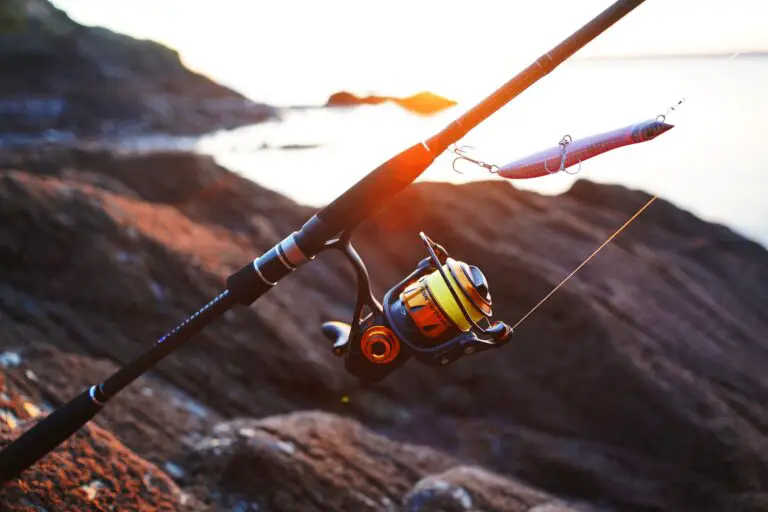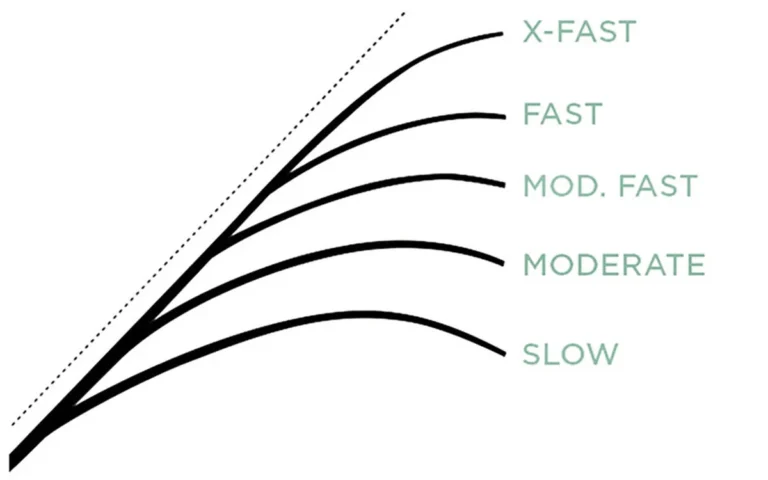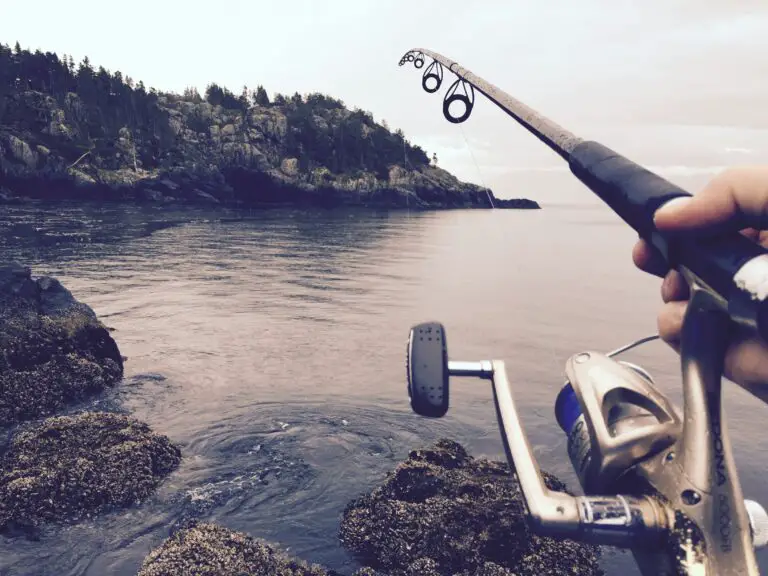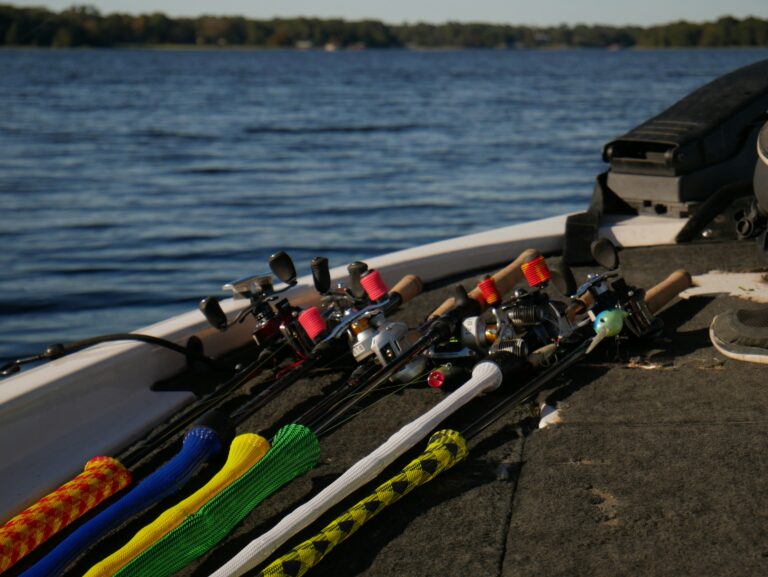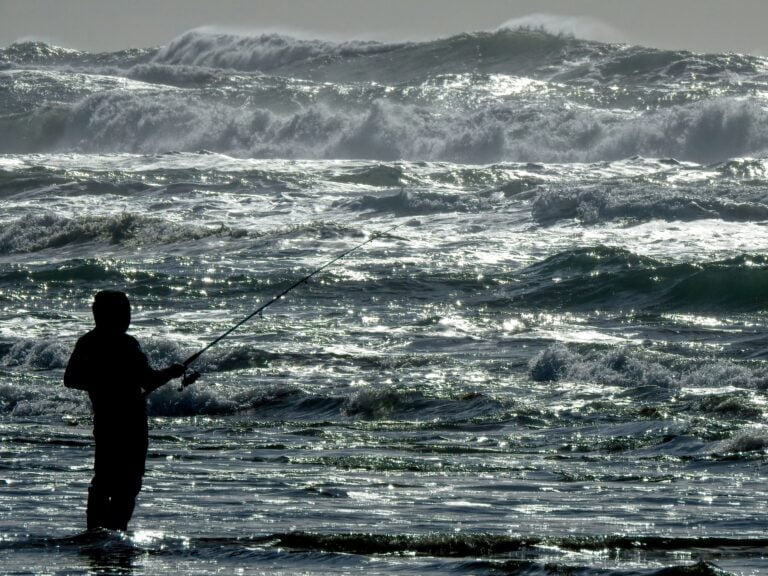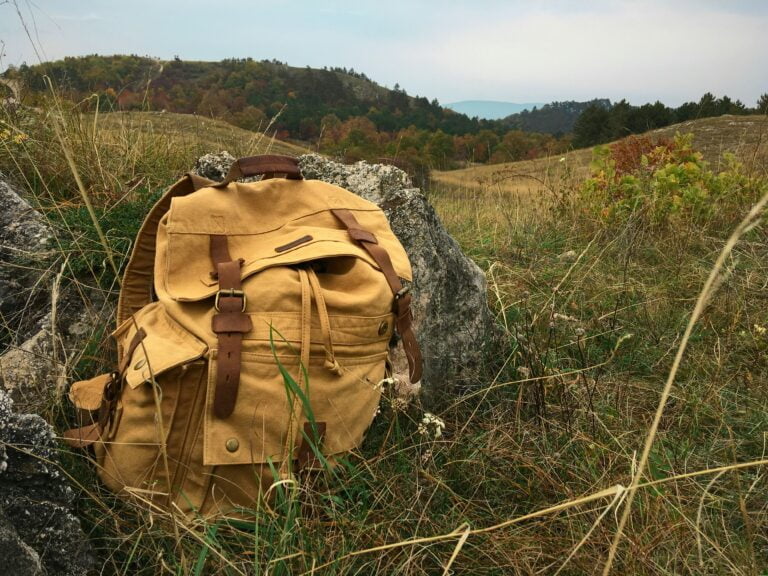What Type OF Line For Walleye Fishing 2024
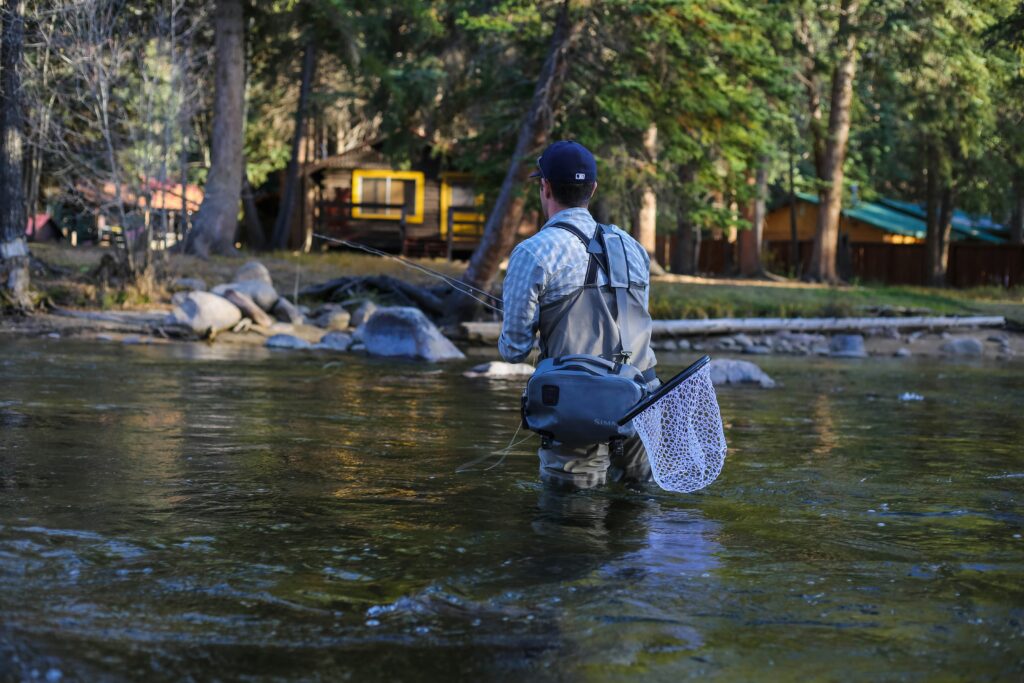
What Type of Line for Walleye Fishing 2024? A Complete Guide for Every Angler
Hi There”
That’s where I am available! Whether you’re a pro angler or simply getting your feet wet, I’m here to guide you through the whole lot you need to understand about what form of line to use for walleye fishing.
From expertise and satisfactory materials to gaining knowledge of how to rig your line nicely, this guide’s got you protected.
Understanding Walleye Behavior: Why the Right Line Matters
Walleye are regarded for being finicky and elusive, making them a difficult but rewarding trap. Understanding their behavior is vital if you want to up your game and increase your chances of landing these prized fish.
Let’s dive into why subtlety and precision are key and how the conduct of walleye immediately impacts your preference of fishing line.
The Importance of Subtlety and Precision in Walleye Fishing
Walleye are infamous for their eager eyesight and sensitivity to changes in their surroundings. Unlike some other species, they won’t aggressively strike at just something that passes through.
Instead, they’re much more likely to inspect your bait or entice carefully before creating a flow. That’s why the proper fishing line—one that’s nearly invisible and gives the proper quantity of finesse—may be the difference between a successful day trip and going domestic empty-handed.
Subtlety is critical because Walleye can, without difficulty, hit upon unnatural actions or an excessive amount of resistance. A line that’s too heavy or too seen can spook them, inflicting them to pull away from your bait.
On the other hand, a line that’s too mild won’t have the electricity to reel in a walleye once it’s hooked. It’s all about finding the best balance among power and stealth, which frequently requires experimenting with distinct kinds of strains depending on the conditions you’re fishing in.
How Walleye’s Behavior Affects Your Choice of Fishing Line
Walleye are most active at some stage in low-mild conditions, along with dawn, nightfall, or overcast days. Their vision is customized to those environments, giving them an awesome advantage.
over prey and, by extension, over anglers who aren’t organized. With this method, your preference for fishing line needs to account for both the light conditions and the fish’s sharp eyesight.
For example, in clean water, a fluorocarbon line is regularly preferred as it’s nearly invisible underwater, lowering the risk that walleyes will spot it.
However, if you’re fishing in deeper or murkier waters, a braided line is probably a better choice.
preference due to its electricity and sensitivity, permitting you to feel even the slightest nibble at the same time as nonetheless being able to cope with the fight a walleye may put up.
Moreover, walleye are recognized to be backside dwellers, frequently sticking near systems like rocks or plant life in which they are able to ambush prey.
This conduct means your line desires to be abrasion-resistant to deal with the rough terrain. A fluorocarbon line, with its excessive resistance to abrasions, is usually a desirable choice in those conditions.
In particular, the conduct of walleye, characterized by their keen eyesight, choice of low-mild conditions, and tendency to stay near the bottom, makes the selection of fishing line important.
Opting for a line that’s diffused but sturdy and tailored to the specific surroundings can drastically enhance your chances of success on your next walleye fishing journey.
What Type of Line Is Best for Walleye Fishing?
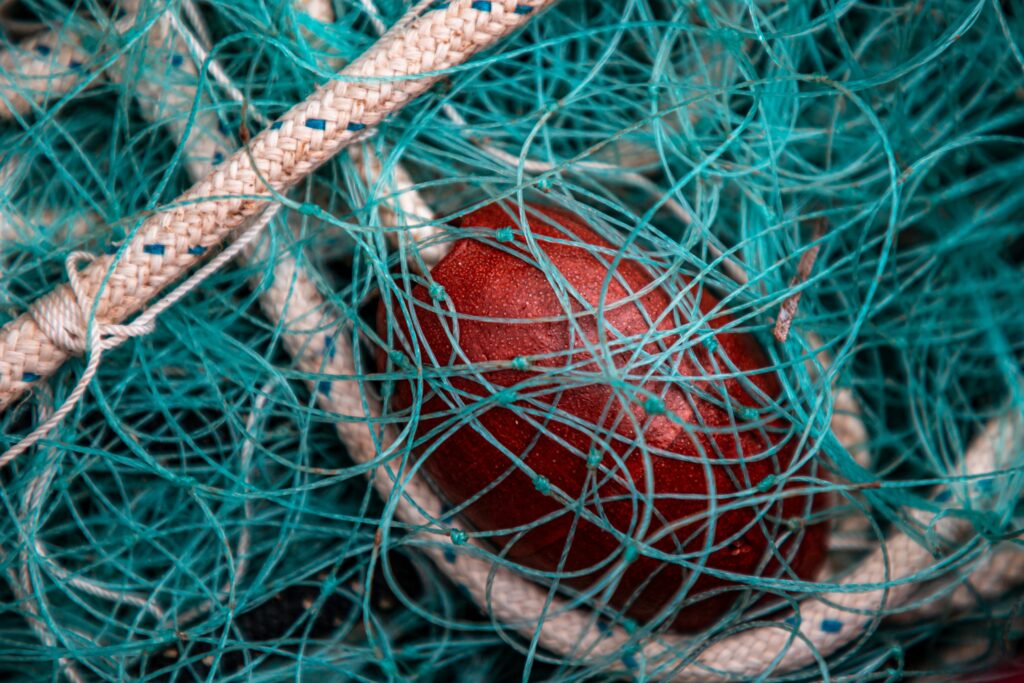
When it involves walleye fishing, the street you pick out might also have a great impact on your success.
With such a lot of options to be had, it is vital to recognize the blessings and cons of each type of line.
similarly to how they relate to Walleye’s particular tendencies. Let’s observe the numerous forms of fishing lines and the essential elements to remember while deciding on the most pleasant line for walleye fishing.
Overview of Different Types of Fishing Lines
Monofilament Line
Monofilament is a famous fishing lure due to its versatility and inexpensive price. It’s made from an unmarried strand of nylon, which presents it with extremely good stability, electricity, stretch, and manipulation.
Monofilament has a high degree of stretch, which can be useful even for stopping fish because it offers a buffer to soak up sudden movements. However, its visibility underwater and susceptibility to abrasion are brilliant downsides.
Fluorocarbon Line
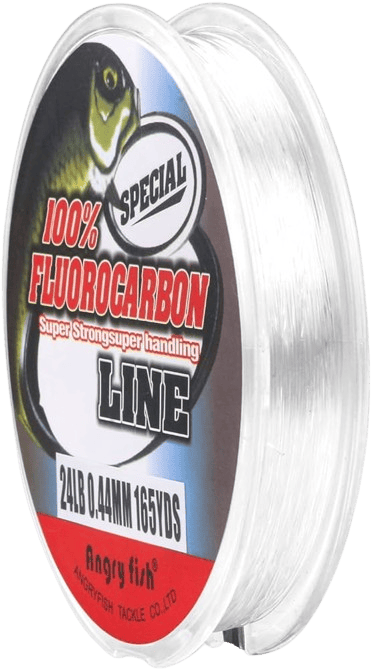
Fluorocarbon is understood for its near invisibility underwater, making it a top desire for fishing in clean waters in which walleye can spot the road. It’s denser than monofilament, so it sinks quicker, making it pinnacle-notch for bottom fishing.
It is where walleye regularly live. Fluorocarbon is likewise utilized in opposition to abrasion, making it long-lasting in environments with rocks, plant life, or distinct underwater systems. However, it is able to be an entire lot less forgiving due to its stiffness and reduced stretch in comparison to monofilament.
Braided Line
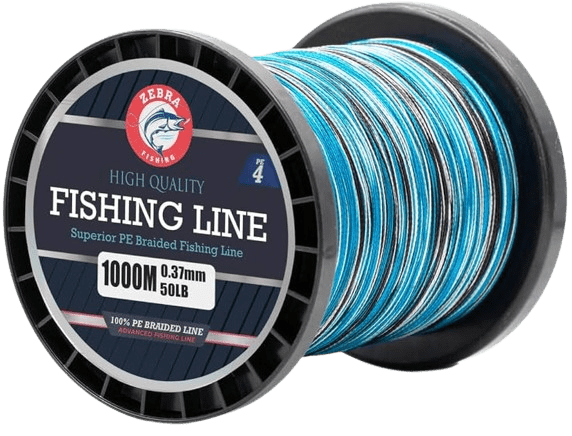
Braided strains are made from a couple of strands of artificial fibers, resulting in a line that is especially sturdy and has minimal stretch. This loss of stretch offers pinnacle-notch sensitivity, permitting you to enjoy even the slightest nibble, which is critical when dealing with the diffused bites of walleye.
Braided lines are also thinner in diameter as compared to monofilament and fluorocarbon of the same electricity, which can be tremendous at the same time as casting prolonged distances or fishing in deep waters.
However, braided traces are an opportunity visible underwater, which may not be first-rate in easy water conditions, and they can be more susceptible to tangling.
Factors to Consider When Choosing the Right Line for Walleye
Water Clarity
One of the most important considerations while fishing is the quality of the water.
In smooth water, walleye can spot a line that’s too visible, which may additionally spook them in an extended manner out of your bait.
In these conditions, a fluorocarbon line is frequently the most popular choice due to its low visibility. In murkier waters, visibility is a wonderful deal less of a hassle, so you could likely select a stronger braided line.
Fishing Depth
Walleye are regularly positioned close to the lowest of lakes and rivers, in particular later in the day. If you’re fishing deep, you’ll want a line that sinks quickly and maintains sensitivity.
Fluorocarbon is the number one desire for this because it sinks faster than monofilament and has the right abrasion resistance, which is critical while fishing near the bottom. A braided line can also be effective for deep-water fishing due to its power and sensitivity.
Targeted Walleye Size
The sort of walleye you’re focusing on must have an effect on your line choice. For smaller walleye, a lighter monofilament or fluorocarbon line must likely suffice, supplying enough energy even while being subtle.
For massive, more competitive walleye, you’ll need a more potent line, together with a heavy fluorocarbon or braided line, to make sure you can cope with the fight.
Fishing Technique
Different fishing strategies can also be named for great strains. For example, if you’re jigging, in which sensitivity is vital, a braided line might be your best bet due to its low stretch and immoderate sensitivity.
On the other hand, if you’re trolling, a monofilament line with its stretch and surprise absorption might be more appropriate.
Abrasion Resistance
Since walleye are often observed close to systems like rocks, logs, and vegetation, your line desires to resist functional abrasions. Fluorocarbon excels in this vicinity because of its hard outer coating, making it a reliable choice for fishing in environments in which your line may also likely rub against tough surfaces.
The most superb shape of line for walleye fishing is predicated on different factors, which consist of water readability, fishing depth, and your chosen technique.
By knowing the fantastic strains available and thinking about those key elements, you may pick out the road with the purpose of developing a terrific threat of success for your subsequent walleye fishing adventure.
Monofilament vs. Fluorocarbon vs. Braided Lines
Pros and Cons
Pros
Affordability: Monofilament is commonly the least costly desire.
Ease of Handling: It’s smooth to tie knots with and has genuine stretch, which may be forgiving at the same time as stopping a fish.
Versatility: suitable for various fishing techniques and situations.
Cons
Visibility: Monofilament is more normally seen underwater in contrast to fluorocarbon, which may be a disadvantage in smooth water.
Abrasion Resistance: It’s a great deal less proof towards abrasion, making it more at risk of harm at the same time as fishing close to rocks or other underwater systems.
Stretch: While stretching can be a bonus, too much can reduce sensitivity, making it more difficult to come across diffused bites.
When to Use Monofilament for Walleye
Monofilament is a remarkable preference for novices, or, at the same time, you’re fishing in less disturbing situations. It’s especially effective in murkier waters, where line visibility isn’t an extremely good scenario. Additionally,
Its stretch may be useful whilst trolling or the use of techniques that require a few gives, consisting of live bait fishing, in that you want the walleye to completely take the bait earlier than setting the hook.
Fluorocarbon Line: The Stealthy Choice
Fluorocarbon line is noted for its close-to-invisibility underwater, making it a popular preference for walleye fishing, specifically in calm water. It is constructed from a thick material, just like nylon, but with specific features.
Why Fluorocarbon Might Be the Best for Clear Water
Walleye are sharp, progressive, and prescient, and they may be much more likely to end up aware of your line in clean water. Fluorocarbon’s refractive index is just like that of water.
which means that it’s loads harder for fish to observe. This can be a game-changer, even as targeted at cautious walleye, increasing your possibilities of a hit hookup.
Benefits of Low Visibility and Abrasion Resistance
Low Visibility: Fluorocarbon is almost invisible underwater, making it ideal for clean water conditions where walleye are in all likelihood to be spooked with the useful resource of a visible line.
Abrasion Resistance: It’s more proof against nicks and scratches than monofilament, making it a reliable choice when fishing near rocky structures or vegetation where walleye frequently cowl.
Density and Sensitivity: Fluorocarbon sinks quicker than monofilament; that’s useful at the same time, as you’re centered on bottom-living walleye. Additionally, it has less stretch, offering better sensitivity for detecting bites.
When to Use Fluorocarbon for Walleye
Fluorocarbon is suitable for smooth water conditions where low visibility is important. It’s also the cross-line when you’re fishing close to a shape or in areas with heavy cowls, thanks to its advanced abrasion resistance.
If you’re using finesse techniques like jigging or drop-shotting, fluorocarbon’s sensitivity and coffee stretch will help you experience each movement and chunk, increasing your achievement fee.
Braided Line: Strength and Sensitivity
The braided line is a powerhouse in terms of power and sensitivity. Constructed from more than one strand of synthetic fibers, braided line is known for its immoderate tensile strength and minimum stretch.
How Braided Line Works in Deeper Waters
The braided line’s loss of stretch makes it fairly sensitive, permitting you to come across even the slightest nibbles from walleye. This is mainly true in deeper waters, where specific strains should possibly lose sensitivity due to the distance and weight.
The thin diameter of braided line also lets you spool more line onto your reel, which is beneficial even when fishing deep or making lengthy casts.
Ideal Scenarios for Using Braille
Deep Water Fishing: Braided line’s sensitivity and electricity make it high-quality for fishing in deeper waters wherein you want to enjoy each bite and make sure you have sufficient line to attain the fish.
Heavy Cover: If you’re fishing in regions with thick vegetation or heavy cowl, braided line’s electricity will help you pull walleye out of hard spots without snapping.
Long Casts: The thin diameter and espresso stretch of the braided line permit longer, extra accurate casts, which might be beneficial when targeting walleye from a distance.
When to Use Braided Line for Walleye
The braided line is exquisite and is applied in conditions in which power and sensitivity are paramount. It’s a superb desire for deep water or heavy cowl fishing, where you need to depend on your line to enjoy the fish and withstand difficult conditions.
However, due to the fact that braided lines are more visible underwater, they’re frequently paired with a fluorocarbon cable to mix the blessings of each trace’s energy and invisibility.
Deciding among monofilament, fluorocarbon, and braided traces depends on the precise conditions you’re fishing in and the strategies you plan to use.
Monofilament is a versatile all-rounder; fluorocarbon excels in easy water with stealth and abrasion resistance; and braided line gives unrivaled energy and sensitivity in deeper waters or heavy cover.
By understanding the strengths and weaknesses of each, you may make an informed selection that maximizes your chances of catching extra walleye for your next fishing trip.
What Line Should I Use for Walleye?

Selecting the right fishing line for walleye isn’t always quite like choosing one off the shelf; it’s approximately knowing the conditions you’ll be fishing in and tailoring your preference as a result. Trust me,
I’ve discovered through enjoying myself that the right line could make all the difference between an efficient day at the water and going home emptyhanded. Let’s delve into specific line pointers primarily based on diverse fishing situations and the manner in which to choose an appropriate line strength and diameter.
Specific Line Recommendations Based on Fishing Conditions
When it comes to walleye fishing, situations can range widely—from crystal-clear lakes to murky rivers, shallow bays to deep reservoirs. Here’s my breakdown of which line kinds work best in distinctive situations:
Clear Water Conditions
When you’re fishing in waters so clean you may see the lowest, stealth becomes your awesome buddy.
Recommended Line: Fluorocarbon Line
Why I Choose Fluorocarbon in Clear Water
Low Visibility: Fluorocarbon has a refractive index similar to water, making it nearly invisible to the sharp-eyed walleye.
I’ve discovered an amazing increase in bites while switching to fluorocarbon in clear situations.
Sensitivity: Its minimal stretch lets me hit upon even the slightest nibble, making sure I do not miss out on any potential catches.
Abrasion Resistance: Clear waters frequently mean rocky or sandy bottoms, and fluorocarbon’s durability facilitates saving breakoffs.
Murky or Stained Water Conditions
In waters where visibility is low, you have a bit more leeway with line preference, but energy and sensitivity continue to be crucial.
Recommended Line: Braided Line with a Fluorocarbon Leader
Why This Combo Works for Me
Strength: The braided line offers a notable energy-todiameter ratio, allowing me to apply a thinner line without sacrificing powerideal for navigating through particles and vegetation, not unusual in murky waters.
Sensitivity: The lack of stretch means I can experience every movement, making sure properly timed hooksets are used even if visibility is terrible.Stealth: Adding a fluorocarbon leader combines the braid’s strength with fluorocarbon’s invisibility, giving me the top quality of each world.
Deep-Water Fishing
Targeting walleye in deeper waters calls for a line that might get down speedily and transmit diffused bites efficaciously.
Recommended Line: Braided Line
Why Braided Line is My Go-To for Depths
Thin Diameter: The narrow profile cuts through water without problems, helping my entice attain preferred depths faster and with much less resistance
Zero Stretch: This guarantees I can locate and reply to bites right away, despite the fact that I am fishing 30 feet or more below the floor.
High Capacity: The thinness allows me to spool extra line onto my reel; it’s crucial when deepdropping or when a huge walleye decides to make a longer term.
Night Fishing
Walleye are notoriously energetic at night, and adjusting your line desire can decorate your nocturnal success.
Recommended Line: Monofilament Line
Why I Prefer Monofilament After Dark
Controlled Stretch: The slight elasticity allows for surprising strikes, decreasing the danger of tearing the hook out of the fish’s mouth for the duration of competitive midnight feeds.
Ease of Handling: Monofilament casts smoothly and is much less vulnerable to tangling in lowmild conditions, making my nighttime fishing revel in more enjoyable.
Affordability: Let’s face it, nighttime may be unpredictable, and the usage of a cost-effective, however powerful, line like monofilament technique won’t break the bank if I want to rerig.
Jigging and Finesse Techniques
When employing sensitive presentations to trap finicky walleye, line choice performs a pivotal characteristic.
Recommended Line: Fluorocarbon Line
Why Fluorocarbon Enhances My Finesse Game
Direct Contact: Minimal stretch offers a right-away connection to the jig, permitting me to impart specific moves and sense-diffused takes.
Sinking Ability: Fluorocarbon sinks faster than monofilament, maintaining my jig in the strike area more effectively.
Invisibility: Its stealthy nature guarantees that cautious walleye aren’t spooked with the aid of the way of the road, developing my hookup costs.
Trolling Techniques
Covering large regions to locate active walleye often consists of trolling, and the right line can improve performance and results.
Recommended Line: Monofilament or Braided Line with a Monofilament Leader
My trolling line choices explained
Monofilament: Its stretch acts as a shock absorber, lowering the danger of pulled hooks even as a walleye acts at pace.
Braided with Mono Leader: The braid gives electricity and sensitivity, even as the monofilament chief offers a piece of provide and decreases visibility near the entice.
Choosing the Right Line Strength and Diameter
Picking the right energy and diameter for your fishing line is certainly as critical as deciding on the proper kind. Here’s how I approach it:
Assessing Target Walleye Size
Consider the common length of walleye you are in all likelihood to stumble upon.
Light to Medium Walleye (14 kilos):
Line Strength: 68 lb. check
Line Diameter: Opt for thinner traces to beautify sensitivity and reap longer casts.
Why: Lighter traces offer a more natural lure presentation and enough strength for smaller fish, making the combat more enjoyable.
Large Walleye (5+ kilos):
Line Strength: 1014 lb test
Line Diameter: Slightly thicker but nevertheless practicable for effective casting and sensitivity.
Why: Heavier strains ensure you’ve got the critical power to address large, stronger fish, mainly in tough environments.
Considering Fishing Environment and Structure
The presence of rocks, wood, and plants impacts my line energy and diameter choice.
Heavy Cover and Obstructions:
Line Strength: 12–15 lb. Test or better
Line Diameter: Thicker traces offer abrasion resistance.
Why: In environments in which snags and abrasions are common, stronger and thicker strains help prevent ruin and loss of tools.
Open Water and Minimal Structure
Line Strength: 6–10 lb Take a look
Line Diameter: Thinner traces suffice and enhance lure motion.
Why: With fewer obstacles, you could manipulate to use lighter strains that enhance sensitivity and bait presentation.
Adapting to Weather and Water Conditions
Weather and water conditions can have an effect on how walleye behave and the manner in which your line plays.
Windy Conditions
Line Strength: Slightly heavier (eight 12 lb check)
Line Diameter: Moderate thickness to counteract wind drag.
Why: A heavier line enables maintaining control over your trap and discovering bites in spite of wind-precipitated disturbances.
Cold water temperatures
Line Strength: Maintain general strengths, but do not forget line cloth flexibility.
Line Diameter: Thinner traces can also perform better as they continue to be extra supple in cold situations.
Why: Some lines can become stiff in cold water; deciding on a line that continues flexibility ensures higher dealing with and sensitivity.
Balancing sensitivity and strength
Finding the candy spot amongst feeling the bite and having sufficient muscle to reel inside the fish is fundamental.
For maximum sensitivity
Line Strength: Use the lowest strength appropriate for the situation (6 lb; take a look at).
Line Diameter: Thinner diameters beautify the experience and entice movement.
Why: Lighter setups let you come upon subtle bites commonplace with walleye, increasing hookup rates.
For enhanced durability
Line Strength: Opt for higher strengths (10–14 lb check).
Line Diameter: Accept a barely thicker line for added peace of mind.
Why: When situations are difficult or fish are aggressive, a more potent line guarantees you’re organized for full-of-life fights and tough retrieves.
Matching Line to Rod and Reel Setup
Ensuring your line complements your device maximizes performance.
Light to Medium Rods:
Line Strength: 6–10 lb Take a look at
Line Diameter: Thin to medium thickness.
Why: Balancing line energy with rod strength guarantees smooth casting and decreases stress for your system.
Medium-Heavy to Heavy Rods
Line Strength: 1220 lb test
Line Diameter: Thicker traces are appropriate for strong setups.
Why: Heavier rods can manage stronger lines, supplying the leverage needed for big walleye and challenging situations.
Final Thoughts on Choosing the Right Line for Walleye
Selecting a satisfactory fishing line for walleye involves thoughtful attention to various factors, which include water readability, depth, structure, and your precise fishing strategies. Personally, I constantly hold some of the traces in my tackle box so I can adapt to changing conditions on the fly.
alongDo
Remember, experimentation is part of the fun Do not be afraid to try one-of-a-kind combinations to see what works extremely well for you. With the proper line, you’ll increase your probabilities of landing that trophy walleye and making lasting fishing recollections.
What Color Fishing Line Is Best for Walleye?
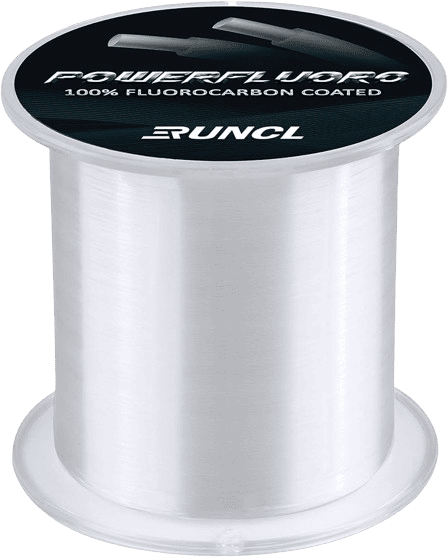
When it comes to walleye fishing, the coloration of your fishing line can drastically effect your fulfillment. Walleye are recognized for their sharp vision, specifically in low-moderate situations.
Because of this, they could, without issue, detect unnatural factors in their environment, along with your line. Choosing the right coloration could make all of the difference in whether or not you get that chunk.
Let’s dive into how color impacts walleye fishing and discover the first-class options for one-of-a-kind water situations.
The Impact of Color on Walleye Fishing Success
Walleye have the super functionality to see in a low, mild manner to the tapetum lucidum of their eyes—a layer of tissue that displays mildness, improving their imaginative and prescient nighttime abilities.
This makes them especially adept at spotting motion and contrasts inside the water. If your fishing line sticks out too much, it could spook the fish, decreasing your chances of success.
Why Line Color Matters
Visibility: The color of your line can either blend in with the surroundings or stand out like a sore thumb. In clear water, a specially seen line may want to reason walleye to pull away from your bait.
Camouflage: Matching your line color to the water conditions can make your presentation more natural, increasing the probability that a walleye will strike.
Light Absorption: Different colorings absorb and mirror mildly differently, which could effect how visible your line is at numerous depths and beneath super lighting fixture conditions.
Best Color Choices for Various Water Conditions
Choosing the right line color isn’t one-length-fits-all; it is predicated upon intently considering the water situations you’re fishing in. Here’s a breakdown of the exceptional line colors for considered one-of-a-type situations:
Clear Water Conditions
In crystal-clear waters, walleye are much more likely to stumble on and keep away from your line if it’s too visible.
Best Line Color: Clear or Fluorocarbon (Transparent)
Why I Choose Clear or fluorocarbon?
Low Visibility: Clear traces are nearly invisible underwater, making them ideal for clean water in which walleyes can, without problems, spot any remote items.
Natural Presentation: Fluorocarbon’s transparency permits for a more natural bait presentation, essential in situations in which walleye can scrutinize your setup.
Stealth: The lack of coloration reduces the threat of alerting Walleye for your line, increasing the probabilities of a chunk.
Murky or Stained Water
In murky or stained water, walleye depend more on their lateral line experience than their vision, although line visibility plays a function.
Best Line Color: Green or Yellow
Why do green or yellow work for me?
Green: This color blends nicely with the natural hues of most freshwater environments, specifically in stained water, wherein it mimics the advent of algae or flowers.
Yellow: While more visible to the angler, the yellow line may be effective in murky situations where visibility is low, assisting you to display line motion without spooking the fish.
Balance: These colorings strike a balance between visibility and camouflage, permitting you to preserve the music of your line while nevertheless supplying a less intrusive setup to the fish.
Deep-water fishing
When concentrated on walleye in deeper waters, the shade of your line can affect how deep it appears and the manner in which it’s visible at greater depths.
Best Line Color: Blue or Green
Why I Prefer Blue or Green in Deep Water
Blue: As blue moderate penetrates deeper than distinct hues, a blue line has an inclination to aggregate higher in deeper waters, making it much less visible to walleye lurking below.
Green: Green lines artwork well in deeper waters with heavy vegetation as they mimic the natural environment, lowering the threat of detection.
Camouflage: Both shades are effective at blending into the deeper, darker environments where walleye regularly live, helping to keep them away from spooking these cautious fish.
Night Fishing
Walleye are more lively at night, and line color desire can nonetheless effect your success in low-light situations.
Best Line Color: Clear or Low-Visibility Green
Why These Colors Are My Nighttime Go-To
Clear: Even at night, walleyes can spot unnatural shades, so a clean line is the most stable guess to keep away from detection.
Low-Visibility Green: This coloration becomes almost invisible in low-moderate conditions, blending with the darker, shadowy environment commonplace during nighttime fishing.
Subtlety: The decreased slight at night means you may’t rely upon vivid sun shades to tune your line, making those low-visibility options first-class for a stealthy technique.
Ice Fishing
When ice fishing for walleye, the line color choice is unique because of the perfect light situations below the ice.
Best Line Color: Fluorescent Blue or Clear
Why These Colors Work Under the Ice
Fluorescent Blue: This color stands out against the white backdrop of the ice, making it less difficult to see, but it will additionally become less visible to Walleye in the dim light below the ground.
Clear: As with clean water, a clean line is a stable choice for fending off spooking walleye under the ice, wherein they may be particularly cautious.
Visibility: These shades help you reveal your line’s position and movement, despite the fact that they provide a herbal presentation to the fish below.
Final Thoughts on Choosing the Best Line Color for Walleye
Selecting the proper fishing line color for walleye isn’t approximately what appears brilliant to you—it’s approximately what works well inside the situations you’re fishing in.
From easy to murky waters, shallow to deep, day to night, adjusting your line coloration can notably beautify your chances of catching extra walleye.
Remember, it’s all about mixing in with the surroundings and staying one step ahead of those sharp-eyed fish. With the right shade, you’ll be better prepared to outsmart walleye and reel in greater catches on your next fishing adventure.
Is Fluorocarbon Better Than Braid for Walleye?

Both have their strengths; however, the extremely good preference depends on the situation you are in and your fishing style.
Let’s dive proper right into a head-to-head evaluation of fluorocarbon vs. braid and find out at the same time as one may additionally likely outshine the opposite.
Head-to-Head Comparison: Fluorocarbon vs. Braid
Visibility
Walleyes have sharp eyesight, so line visibility ought to make a huge difference.
Fluorocarbon: Fluorocarbon gives proper sensitivity, yet it has considerable stretch. This little span may impede your ability to detect highly distributed bites, especially in deeper water or when using finesse techniques.
Braid: The braided line, instead, is extra visible because of its manufacturing and cloth. While this isn’t a dealbreaker in advantageous conditions, it can be a disadvantage in clean water, where walleye are more careful.
Winner: Fluorocarbon If you’re fishing in easy water or focused on finicky walleye, fluorocarbon’s low visibility offers you the edge.
Sensitivity
Feeling the slightest nibble is essential, even if you are walleye fishing.
Fluorocarbon: Fluorocarbon gives accurate sensitivity, but it does have a bit of stretch. This slight stretch can confuse your capability to stumble upon very diffused bites, mainly in deeper water or at the same time as using finesse techniques.
Braid: Braid is named for its 0-stretch nice, which translates to pinnacle-notch sensitivity. With braid, you’ll experience even the faintest faucet, providing you with the functionality to react fast and set the hook.
Winner: Braid for maximum sensitivity, specifically in deep water or even as jigging; braid is difficult to triumph over.
Strength and Abrasion Resistance
Walleye are frequently close to rocky structures and vegetation, so sturdiness is vital.
Fluorocarbon: Fluorocarbon provides the correct sensitivity; however, it does have some stretch. This little stretch may impair your ability to detect highly dispersed bites, particularly in deeper water or while utilizing finesse methods.
Braid: A braided line is mainly sturdy for its diameter, permitting you to use a thinner line without sacrificing breaking power. However, it’s now not as abrasion-resistant as fluorocarbon and might fray more without problems when it comes into contact with difficult surfaces.
Winner: Fluorocarbon. At the same time as fishing in areas with hundreds of capability snags or abrasive surfaces, fluorocarbon’s sturdiness is out there.
Casting Distance
Reaching the hard-to-get-to spots may be essential, mainly in our bodies of water.
Fluorocarbon: While fluorocarbon has a few blessings, it’s typically thicker and stiffer than braid, which can reduce casting distance. It’s also more at risk of line reminiscence because of coiling and tangles.
Braid: Braid’s thinner diameter and versatility permit for longer, smoother casts. Its lack of stretch additionally facilitates more accurate casting, especially when precision is at its height.
Winner: Braid If you need to solidify a manner or hit a particular spot with accuracy, braid is the higher desire.
Knot Strength
A sturdy, dependable knot is vital for keeping your line intact in the course of a fight with a walleye.
Fluorocarbon: Fluorocarbon is a chunk trickier to knot in comparison to braid, and wrong knots can slip or cause harm. However, with the proper method and workout, it is able to live strong.
Braid: Braid is much less complex to knot and normally holds higher, especially with the proper knots, similar to the Palomar or Double Uni. Its loss of stretch additionally guarantees that the knot’s electricity isn’t compromised under strain.
Winner: Braid for ease of tying and reliability; braid edges out fluorocarbon.
Versatility
Different fishing conditions call for one-of-a-kind techniques, so versatility is crucial.
Fluorocarbon: Fluorocarbon shines in smooth water and in finesse situations where stealth is crucial. It’s also an awesome chief fabric, even with the use of braid as your number one line.
Braid: Braid is bendy in terms of applications—whether or not you’re jigging, trolling, or casting, braid can address it. However, it frequently requires a pacesetter (like fluorocarbon) in easy water to lessen visibility.
Winner: Tie. Every hint has its location based on the state of affairs. Fluorocarbon is high-quality for easy water and finesse, while braid excels in deeper water and heavy cowl.
Situations Where One Outshines the Other
Clear Water Conditions
When stealth is the choice of the sport, fluorocarbon is your pass-to.
Why Fluorocarbon Shines: In easy water, in which walleye are much more likely to scrutinize your presentation, fluorocarbon’s low visibility lets you live below the radar. Whether you’re casting, jigging, or using stay bait, fluorocarbon minimizes the opportunity of spooking the fish.
Deep Water and Vertical Jigging
When fishing deep or vertically, sensitivity is fundamental, and braid takes the lead.
Why Braid Shines: With Braid’s lack of stretch technique, you can experience everything that’s taking place in the supply-up of your line, even in deep water.
Whether you’re jigging or fishing with a heavy weight, braid’s sensitivity guarantees you don’t pass over the diffused bites.
Heavy Cover and Structure
Fishing around rocks, logs, or vegetation? Fluorocarbon’s abrasion resistance is difficult to overcome.
Why Fluorocarbon Shines: When you’re pulling walleye out of a heavy cowl, you need a line that may face up to abrasion. Fluorocarbon is a lot less likely to fray or ruin when dragged over tough surfaces, making it best for those situations.
Casting Distance and Accuracy
If you want to attain way-off dreams, Braid is your top-notch friend.
Why Braid Shines: braid’s skinny diameter and versatility make it nice for extended casts. Whether you’re shore fishing or targeting specific spots in a lake, braid’s casting distance and accuracy provide you with an advantage.
Trolling
When trolling, a combination of braid and fluorocarbon frequently works well.
Why braid shines: For the primary line, braid offers the electricity and sensitivity needed to find out actions, even trolling. Pair it with a fluorocarbon leader for invisibility, and you’ve also been given a setup that covers all bases.
Conclusion: Which is Better for Walleye?
In the end, whether or not fluorocarbon or braid is better for walleye fishing depends in large part on the precise conditions you’re handling. Fluorocarbon is the stealthy preference for clean water and heavy cover; at the same time, braid’s sensitivity and power make it best for deep water and lengthy casts. Personally,
I want to hold myself to my word on the subject and choose based totally on the situation. If you’re focused on walleye in numerous situations,
Don’t hesitate to combine and, in shape, use braid as your essential line and upload a fluorocarbon chief while you need to mix in. In this manner, you get the best of both worlds, maximizing your possibilities of touchdowning that trophy walleye.
How Do You Rig a Line for Walleye?
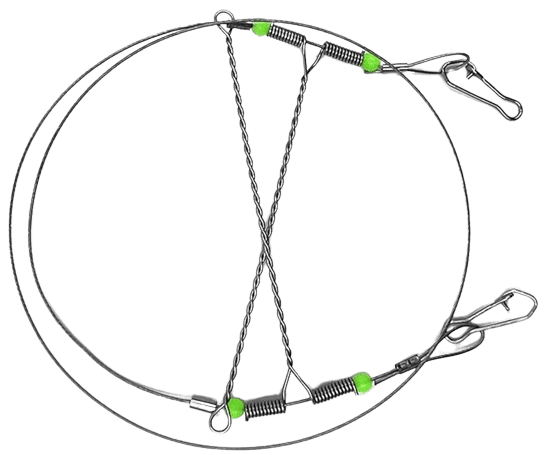
Rigging your line nicely is crucial for success in walleye fishing. Whether you’re a seasoned angler or an amateur, understanding the exceptional rigs and the way to set them up could make a goodsized distinction in your trap fee.
In this phase, we’ll stroll through a step-by-step guide to rigging for walleye, explore some of the most famous rigs, and share guidelines that will help you maximize your catch.
StepbyStep Guide to Rigging for Walleye
Rigging a line for walleye entails more than simply attaching a hook at the end of your line.
Here’s a way to install your line for premiere consequences:
Step 1: Choose the Right Line
Fluorocarbon or Braid: Depending on the water situation and your fishing style, pick either a fluorocarbon line for stealth or a braided line for sensitivity. A not-unusual exercise is to apply braid as the primary line with a fluorocarbon chief for the best of both worlds.
Step 2: Attach a Leader
Why a Leader is Important: A leader provides invisibility and abrasion resistance, which are key when walleyes have sharp eyesight or you are fishing around structures.
How to Attach: Use a double uniknot to connect your braid to your fluorocarbon leader. A leader’s duration of 24 feet is usually enough.
Step 3: Select the right hook.
Hook Size and Style: Walleye have incredibly gentle mouths, so a mild cord hook is typically preferred. size four to six hooks paintings nicely for stay bait, while a size 2 or 4 is right for synthetic lures.
Step 4: Choose Your Rig
Rigs Overview: Depending on which and the way you’re fishing, choose a rig that suits the situation (greater on famous rigs underneath).
Step 5: Add weights and beads (if needed).
Adding Weights: If you’re fishing deep or in modern times, add a slip sinker above a swivel to get your bait down. The weight has to be just enough to preserve your bait at the right intensity without dragging.
Using Beads: Beads can be used to guard knots from weights or to add a bit of shade and noise to attract walleye.
Step 6: Bait Your Hook
Choosing Bait: Live bait like minnows, leeches, or nightcrawlers are popular selections. Thread your bait onto the hook so it sits obviously, encouraging walleye to chew.
Step 7: Cast and Present Your Bait
Casting: Cast your rig to the desired region, whether it’s close to shape, dropoffs, or weed edges.
Presentation: Slowly retrieve or jig your bait, maintaining it in the strike zone for as long as feasible. Walleye often chew at the pause, so vary your retrieval velocity and upload pauses to mimic wounded prey.
Popular Rigs for Walleye Fishing
Now, let’s dive into a number of the best rigs for walleye fishing. Each rig has its strengths, depending on the fishing environment and technique.
The Slip Bobber Rig
Great for fishing suspended walleye or targeting unique depths.
Setup: Start with a slip bobber threaded onto your important line. Next, add a bead, and then tie on a swivel. To the swivel, attach a 24-foot fluorocarbon chief together with your hook and bait at the end. Add breakup shot weights to stability and go with the flow as needed.
When to Use: Ideal for fishing over weed beds, submerged systems, or dropoffs. The slip bobber lets you preserve your bait at a particular depth, making it powerful for suspended walleye.
The Lindy Rig
A versatile rig for presenting stay bait near the bottom is perfect for walleye.
Setup: Start by threading a slip sinker onto your important line, accompanied through a bead to defend the knot. Tie the road to a swivel, and then connect a 2-four-foot leader to the other end of the swivel. Finally, tie your hook to it and bait it.
When to Use: Best for sluggishtrolling or drifting alongside the bottom in lakes and rivers. The Lindy Rig is outstanding for keeping contact with the lowest, even as allowing the bait to transport naturally.
The Spinner Rig
Adds flash and vibration, attracting walleye from a distance.
Setup: This rig involves a spinner blade connected to a frontrunner, accompanied through beads and a hook. You can either tie the spinner rig directly on your predominant line or use it at the side of a bottom bouncer for trolling.
When to Use: Effective for trolling alongside weed edges, dropoffs, or open water. The delivered flash and vibration from the spinner blade can trap walleye, particularly in stained water.
The Bottom Bouncer Rig
Perfect for fishing in deeper waters while keeping your bait near the lowest.
Setup: Attach a backside bouncer to your principal line. Then tie a spinner rig or an easy hook and bait setup to the bottom bouncer’s leader.
When to Use: Ideal for trolling over rocky systems, dropoffs, or deep channels where walleye generally tend to hold. The backside bouncer keeps your bait close to the bottom without getting snagged.
The Drop Shot Rig
Great for precise depth control, mainly while concentrated on finicky walleye.
Setup: Tie a hook onto your line with a Palomar knot, leaving a protracted tag stop for the weight. The hook ought to take a seat perpendicular to the main line. Attach a weight to the quit of the tag line, and bait the hook with a minnow or gentle plastic.
When to Use: Effective in vertical presentations, consisting of while fishing from a boat over deep water or via the ice. The dropshot rig keeps your bait suspended off the bottom, making it simpler for walleye to spot.
Tips for Maximizing Your Catch
Adjust Your Rig for Depth: Walleye regularly pass up and down inside the water column all through the day. Adjust your rig’s depth often to hold your bait in the strike region.
Use a Fluorocarbon Leader: Even if you decide on a braided line for sensitivity, always use a fluorocarbon leader to lessen visibility and increase your chances of hooking a cautious walleye.
Experiment with Bait Presentation: If the walleye aren’t biting, try extraordinary shows. Sometimes a quicker retrieve or a trade-in bait can trigger a strike.
Pay Attention to Weather and Light: Walleye are extra active in low-light situations, so plan your fishing trips in the course of dawn, dusk, or overcast days. Adjust your rig and method for this reason.
Stay patient and persistent. Walleye may be finicky, so don’t be discouraged if you’re not getting bites right away. Keep experimenting with distinct rigs, baits, and displays till you discover what works.
What Is the Best Setup for Walleye Fishing?

When it entails walleye fishing, having the right setup ought to make all the difference between a hit day at the water and coming home emptyhanded.
The excellent combination of rod, reel, and line can vary based on the fishing environment and techniques you suggest using. In this guide, we will discover the notable setups for walleye fishing, making sure you are prepared for numerous situations and techniques.
Ideal rod, reel, and line combinations
The all-around setup
Perfect for maximum walleye fishing situations, providing terrific stability of sensitivity, energy, and flexibility.
Rod: A 6’6” to 7’ medium to medium spinning rod is right. This period and electricity offer sufficient sensitivity to stumble on diffused bites while also providing sufficient backbone to address larger walleye. Look for a rod with a fastaction tip for quick hook sets.
Reel: Pair your rod with a 2500-size spinning reel. This length offers a very good balance among line ability and retrieval speed. Choose a reel with a clean drag gadget, as Walleye could make surprising runs while hooked.
Line: For the allaround setup, a 12 lb braided line with a 6 lb fluorocarbon chief works well. The braid offers sensitivity and energy, while the fluorocarbon chief offers low visibility in clean water.
The Jigging Setup
Designed for vertical presentations and finesse techniques, where sensitivity is prime,.
Rod: Opt for a 6’3” to 6’nine” medium spinning rod with an additional fast movement tip. The shorter length and extrafast action offer superior sensitivity and control, essential for detecting subtle strikes when jigging.
Reel: A 2500-length spinning reel with a quick gear ratio of 6.0:1 or higher is ideal for jigging. The speedy retrieve allows for picking up slack line quickly, especially while fishing in deeper water.
Line: Go with an 8–10 lb braided line for optimum sensitivity, paired with a 6–8 lb fluorocarbon chief. The braid’s zero stretch guarantees you experience each bump and bite, while the fluorocarbon leader remains almost invisible to walleye.
The Trolling Setup
It is best for masking massive areas of water and targeting walleye at unique depths.
Rod: A 7’ to 8’ medium-strength trolling rod is ideal. The longer rod period facilitates spreading your traces when trolling a couple of setups and gives better manipulation over diving lures and planer forums.
Reel: Use a line counter reel within the 1520-length variety. A line counter reel is critical for preserving specific depths while trolling, allowing you to replicate hit setups when you locate the fish.
Line: A 10–14 lb monofilament line is regularly desired for trolling because it provides a little stretch, which can be useful whilst trolling crankbaits or spinners. If using a braided line for deeper trolling, pair it with a 10–12 lb fluorocarbon leader to lessen visibility.
The live bait-rigging setup
Ideal for fishing live bait near the lowest, where walleye regularly feed.
Rod: Choose a 7’ to 7’6” mediumlight spinning rod with quick action. The longer rod facilitates managed drifts and gives higher surprise absorption with the use of mild leaders.
Reel: A 2500-size spinning reel with a clean, dependable drag is prime. Walleye may be cautious when taking live bait, so a reel that allows for precise drag modifications is useful.
Line: A 6-lb fluorocarbon line is ideal for live bait rigging. Fluorocarbon’s low visibility and abrasion resistance make it ideal for subtle presentations in clear or pressured waters.
Matching your setup to the fishing environment
Clear Water vs. Stained Water
Clear Water: In clean water, stealth is critical. Opt for fluorocarbon leaders or even all fluorocarbon setups to reduce line visibility. A lighter, more touchy rod paired with a reel that has a smooth drag will help you locate and land cautious walleye.
Stained Water: In stained or murky water, line visibility is much less of a concern. You can use barely heavier lines and rods. The braided line works nicely right here because it affords strength and sensitivity, despite a bit greater color within the water.
A medium-power rod with a slight to speedy movement can help with casting heavier lures and dealing with competitive strikes.
Deep Water vs. Shallow Water
Deep Water: When fishing deep water, sensitivity is prime, as bites can be subtle. A braided principal line with a fluorocarbon chief is a splendid choice. Pair this with a medium-strength rod and a reel with a better tool ratio to manipulate deeper retrieves and hold consistent contact with your trap or bait.
Shallow Water: In shallow water, stealth and precision are essential. A medium-mild spinning setup with a fluorocarbon line works well for providing live bait or small lures without spooking walleye. Shorter rods can offer higher management in tight quarters or whilst making precise casts.
Rocky vs. Weedy Areas
Rocky Areas: Abrasion resistance is important when fishing in rocky areas. A fluorocarbon line or leader will assist in defending against sharp rocks and debris. A medium-electric rod with quick movement allows for brief hook sets and the power to persuade fish far from capability snags.
Weedy Areas: In weedy environments, a setup that can cope with getting through vegetation is important. A braided line is a pinnacle preference here, as it cuts through weeds without breaking. A medium-energy rod with a moderate motion gives you the backbone to tug walleye out of the weeds while nonetheless providing enough sensitivity to sense bites.
Rivers vs. lakes
Rivers: In rivers, the present day plays a big function. A medium-power rod with fast action is versatile enough to address distinctive situations, from casting into modern-day seams to drifting stay bait.
A reel with a solid drag machine is crucial to manipulating the pull of each fish and the contemporary. For line, remember a braided essential line for sensitivity, paired with a fluorocarbon leader.
Lakes: In lakes, where walleye is probably spread out, a trolling setup can help cover more water. For casting or jigging, a medium-spinning rod with a fluorocarbon line or leader is a superb all-around preference. This setup permits you to fish diverse depths and structures successfully.
Conclusion: Tailoring Your Walleye Setup
A high-quality setup for walleye fishing is one that matches the environment and strategies you plan to apply. Whether you’re jigging in deep water, trolling throughout an extensive lake, or casting right into a river’s current, the proper aggregate of rod, reel, and line can greatly beautify your fulfillment.
By tailoring your setup to the particular conditions you face, you’ll increase your possibilities of hooking into more walleye and taking part in an efficient day on the water.
Maintaining Your Fishing Line: Tips for Longevity
Taking care of your fishing line is likewise crucial, as is choosing the right one. Proper protection now not only extends the lifespan of your line but also ensures that it plays nicely each time you want it to.
In this manual, we’ll cover essential recommendations for keeping your fishing line, together with signs and symptoms that it’s time to update it.
How to Properly Care for and Maintain Your Fishing Line
Rinse After Every Use
Freshwater Fishing: While freshwater is a fantastic deal and plenty less corrosive than saltwater, it’s an awesome idea to rinse your line after each use, in particular in case you’ve been fishing in a lake with heavy algae or different contaminants. A quick rinse with easy water lets you get rid of any debris that might degrade the street through the years.
Saltwater fishing: Saltwater may be particularly harsh on fishing lines, leading to corrosion and weakening. Always rinse your line very well with easy water after saltwater fishing. Pay greater attention to the reel and the guides, as salt can be obtained there.
Store your line properly.
Avoid direct sunlight: UV rays from the sun can weaken fishing lines, mainly monofilament and fluorocarbon. Store your rods and reels in a groovy, dark place, despite the fact that they are not in use.
Prevent Line Memory: Line memory takes area even as the street keeps the shape of the reel spool, predominantly coils and twists. To keep away from this, loosen the drag in your reel in advance before storing it. You can also cast off the spool completely and hold it separately in a subject to save you reminiscence loss.
Check for nicks and scratches.
Regular Inspections: Before and after each fishing experience, run your palms along the length of the street to test for any nicks, abrasions, or inclined spots. These can substantially reduce the road’s electricity and cause interruptions.
Cut and Retie: If you discover any broken sections, cut them out and retie your knots. It’s better to lose some inches of line than to lose a trophy walleye due to an inclined detail.
Re-spool Regularly
Frequency of Use: How often you need to re-spool your line depends on how regularly you fish. If you’re an avid angler, re-spool every few months. For occasional fishermen, in some instances, twelve months might be enough.
Type of Line: Monofilament must be replaced more often than braided or fluorocarbon traces because it has a tendency to degrade faster. Braided strains can stay longer; however, they have to be checked often.
Use Line Conditioner
Line Conditioners: Applying a line conditioner can help lessen friction, boom boom increase casting distance, and boom the lifespan of your line. Spray it at the spool before every fishing session for extremely good effects.
Signs: It’s Time to Replace Your Line
Visible Wear and Tear
Frays and Abrasions: If your line is visibly frayed or has a couple of abrasions, it’s time to replace it. Even minor damage can weaken the street and cause unexpected breaks.
Reduced Knot Strength
Knot Slippage: If you take a look at the fact that your knots aren’t as shielding as they used to or that they’re slipping beneath tension, it’s a sign that the road’s integrity has been compromised.
Loss of flexibility
Stiff or Brittle Line: Over time, fishing lines can end up stiff or brittle, mainly monofilament. This lack of flexibility makes the road extra vulnerable to breakage. If your line feels a whole lot less supple than it used to be, it’s time for an opportunity.
Faded or Discolored Line
Color Fading: While coloration fading is not uncommon in monofilament and braided lines, it is able to indicate that the road has been exposed to UV rays for too long. Faded or discolored traces want to be replaced to ensure the most dependable and ordinary performance.
Excessive Line Memory
Coiling and Twisting: If your line has immoderate memory because of normal coiling and twisting, it’s not in peak situations. While you can try and reduce memory with the aid of stretching the road, continual troubles suggest it’s time for a cutting-edge spool.
Common Mistakes to Avoid When Choosing a Fishing Line
Choosing the precise fishing line is critical for success on the lake.
However, many anglers make not-uncommon mistakes that could result in left-out catches or a stressful day of fishing. In this phase, we’ll speak about some of the pitfalls and techniques to keep away from them to make sure you’re generally using the proper line.
Pitfalls That Can Lead to Missed Catches
Using the Wrong Line for the Conditions
One-Size-Fits-All Mentality: A common mistake is assuming that one sort of line will work for all situations. For example, using a heavy braided line in clean water can spook walleye, while the use of a slight monofilament in heavy cover might in all likelihood bring about damage. Always adapt your line to precise fishing conditions.
Ignoring Water Clarity: Water readability is a huge characteristic of line desire. In clean water, fluorocarbon’s low visibility is a mission, but in murky water, you could break out with more visible traces like braid or colored monofilament.
Choosing the Wrong Line Strength
Overestimating or underestimating: Another mistake is the use of a line that’s both too strong and too willing for the cause of the species. Overestimating the road’s strength can reduce sensitivity and make your setup more visible, notwithstanding the fact that underestimating it may cause interruptions.
Ignoring Rod and Reel Compatibility: Your line electricity wants to be well matched with your rod and reel. Using a line that’s too heavy for your rod can lessen casting distance and accuracy, just as a line that’s too mild won’t offer enough strength to address massive fish.
Failing to Check Line Capacity
Overloading the reel: Overloading your reel with lines can cause casting issues and extended line tangles. Always test your reel’s line functionality and spool it efficiently to avoid problems.
Underloading the reel: Conversely, underloading your reel can reduce casting distance and result in line slippage at the spool. Make sure to spool sufficient line to fill the reel, but not so much that it causes problems.
Not Considering Stretch and Sensitivity
Ignoring Line Characteristics: Each form of fishing line has awesome tendencies that encompass stretch and sensitivity that have an effect on your unusual fishing and fashionable overall performance.
For instance, monofilament has extra stretch, which can be forgiving but additionally makes it a lot less sensitive. At the same time, braid has no stretch, providing the maximum sensitivity but tons of awful, much less marvel absorption.
Mismatching Line with Fishing Style: If you’re jigging for walleye, sensitivity is critical, so a braided line might be the top-notch choice. For trolling, in which stretch can help take in the marvel of a positioned fish, monofilament might be better.
Overlooking Abrasion Resistance
Fishing in Rough Conditions: When fishing in areas with rocks, flowers, or particular functionality snags, deciding on a line with the right abrasion resistance is vital. Fluorocarbon and braid commonly offer higher abrasion resistance than monofilament, making them top-notch for difficult conditions.
Not Using a Leader: Even if your primary line has appropriate abrasion resistance, using a pacesetter can offer more safety and decrease the opportunity of losing a fish because of the street placed on it.
How to Ensure You’re Always Using the Right Line
Research and Match Line to Target Species
Know Your Fish: Research the species you’re concentrated on and the environments they inhabit. Understanding walleye behavior and habitat will help you select the proper line for the hobby.
Adjust for fishing strategies
Technique-Specific Lines: Different fishing techniques can, furthermore, require particular lines. For instance, trolling can also benefit from a monofilament line with a few stretches, while vertical jigging can also additionally require a sensitive braided line.
Regularly Update Your Gear
Stay Up to Date: The fishing line era continues compliance, with new traces supplying stepped-ahead energy, sensitivity, and sturdiness. Regularly replace your tool, and don’t be afraid to try for present-day traces that could improve your fishing style.
Test Your Line Before Fishing
Perform a Line Test: Before heading out, check your line with the sources of tying a knot and using stress to ensure it’s strong. If the road snaps or the knot slips, it’s time to replace it.
Consider environmental factors.
Weather and Water Conditions: Always keep in mind environmental elements like water readability, depth, and the presence of systems when deciding on your line. Adjust your setup based totally on the state of affairs to maximize your possibilities for success.
Conclusion: Perfecting Your Fishing Line Choices
Maintaining your fishing line and preventing uncommon errors in line desire are key additives to successful walleye fishing. By properly being involved with your line, recognizing when it wants to be replaced, and making knowledgeable choices based on the fishing conditions,
You could make certain that you’re typically using a top-notch line for the hobby. Remember, the right line can be the distinction between touchdown that trophy walleye and telling the tale of the simplest one, which was given away.
How often you need to re-spool your line depends on how regularly you fish. If you’re an avid angler, re-spool every few months. For occasional fishermen, in some instances, twelve months might be enough.
Type of Line: Monofilament must be replaced more often than braided or fluorocarbon traces because it has a tendency to degrade faster. Braided strains can stay longer; however, they have to be checked often.
Use Line Conditioner
Line Conditioners: Applying a line conditioner can help lessen friction, increase casting distance, and increase the lifespan of your line. Spray it at the spool before every fishing session for extremely good effects.
Signs: It’s Time to Replace Your Line
Visible Wear and Tear
Frays and Abrasions: If your line is visibly frayed or has a couple of abrasions, it’s time to replace it. Even minor damage can weaken the street and cause unexpected breaks.
Reduced Knot Strength
Knot Slippage: If you take a look at the fact that your knots aren’t as shielding as they used to or that they’re slipping beneath tension, it’s a sign that the road’s integrity has been compromised.
Loss of flexibility
Stiff or Brittle Line: Over time, fishing lines can end up stiff or brittle, mainly monofilament. This lack of flexibility makes the road extra vulnerable to breakage. If your line feels a whole lot less supple than it used to be, it’s time for an opportunity.
Faded or Discolored Line
Color Fading: While coloration fading is not uncommon in monofilament and braided lines, it is able to indicate that the road has been exposed to UV rays for too long. Faded or discolored traces want to be replaced to ensure the most dependable and ordinary performance.
Excessive Line Memory
Coiling and Twisting: If your line has immoderate memory because of normal coiling and twisting, it’s not in peak situations. While you can try and reduce memory with the aid of stretching the road, continual troubles suggest it’s time for a cutting-edge spool.
FAQs
Q: What line do I need to apply for walleye?
A: The great line walleye relies on your fishing environment. Monofilament is bendy, fluorocarbon is ideal for easy waters, and braid excels in deeper waters.
Q: What color of fishing line is first rate for walleye?
A: The amazing color is regularly easy or inexperienced for easy waters and espresso visibility environments.
Q: Is fluorocarbon better than braid for walleye?
Fluorocarbon is higher for stealth, especially in easy water, at the same time as braid is higher for electricity and deepwater fishing.
Q: How do you rig a line for walleye?
A: Popular rigs embody the slip bobber rig, Lindy rig, and jig rig. Each has its very own strengths, depending on the scenario.
Q: What is an outstanding setup for walleye fishing?
A medium-mild rod, paired with a spinning reel and a 6–10-pound take-a-appearance line, is right for walleye fishing.
Q: What is the most wonderful bait for walleye?
Live bait like minnows or leeches is quite powerful; however, artificial lures like crankbaits can also work properly, depending on the situation.properly,

